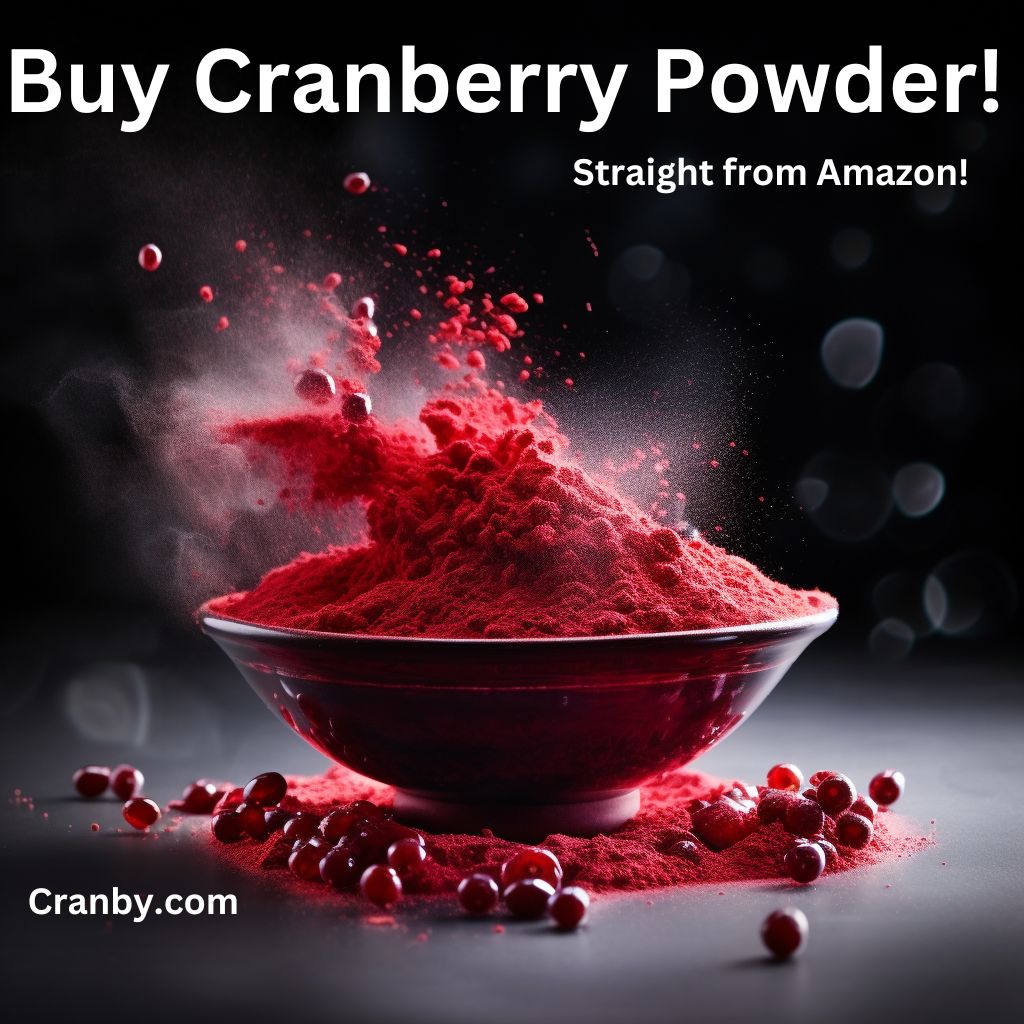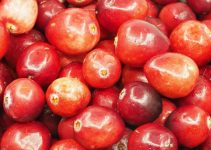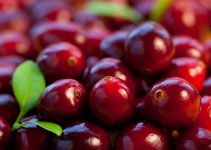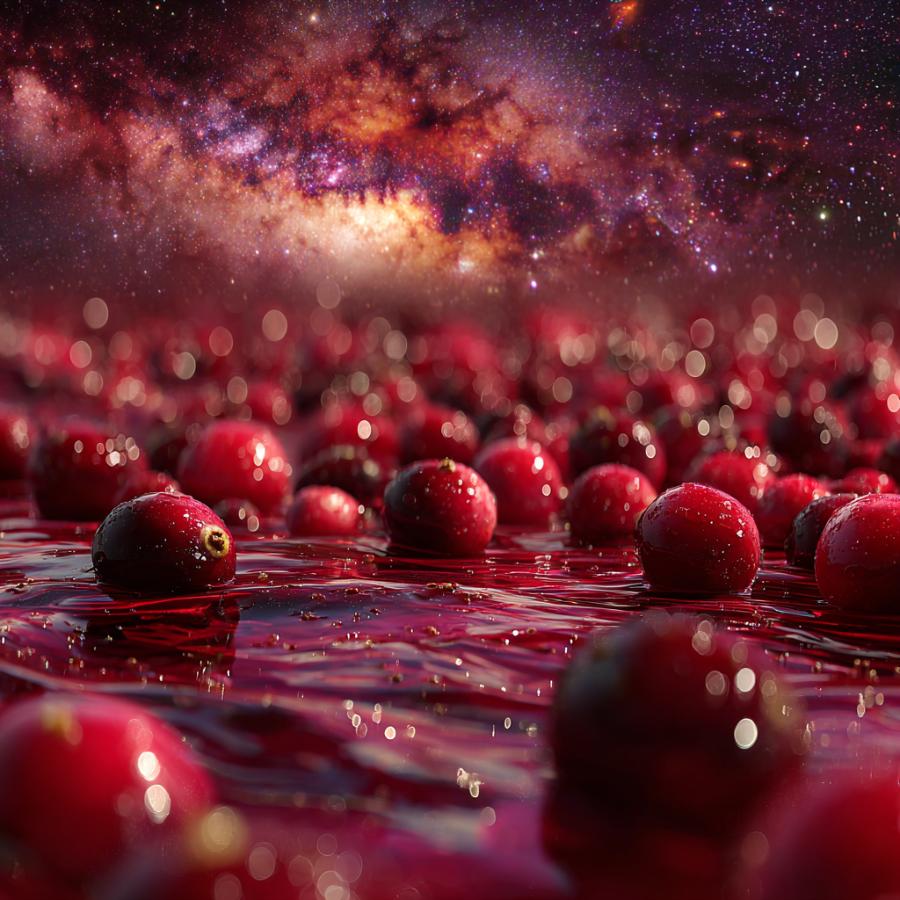
Cranberries are Awe Inspiring
Cranberries are very special to People
I believe that our feelings we have for cranberries hide in our unconscious, and maybe that’s a good place for them to stay. It’s definitely not one of the first berries or fruit that comes to mind when people play the game that is, “What’s your favorite food/fruit/dessert?”
In fact cranberries rarely come up at all. But I’m going to show you why they mean much more to us than we realize, and just how special and awe-inspiring these small, crimson, tart berries are.
Color
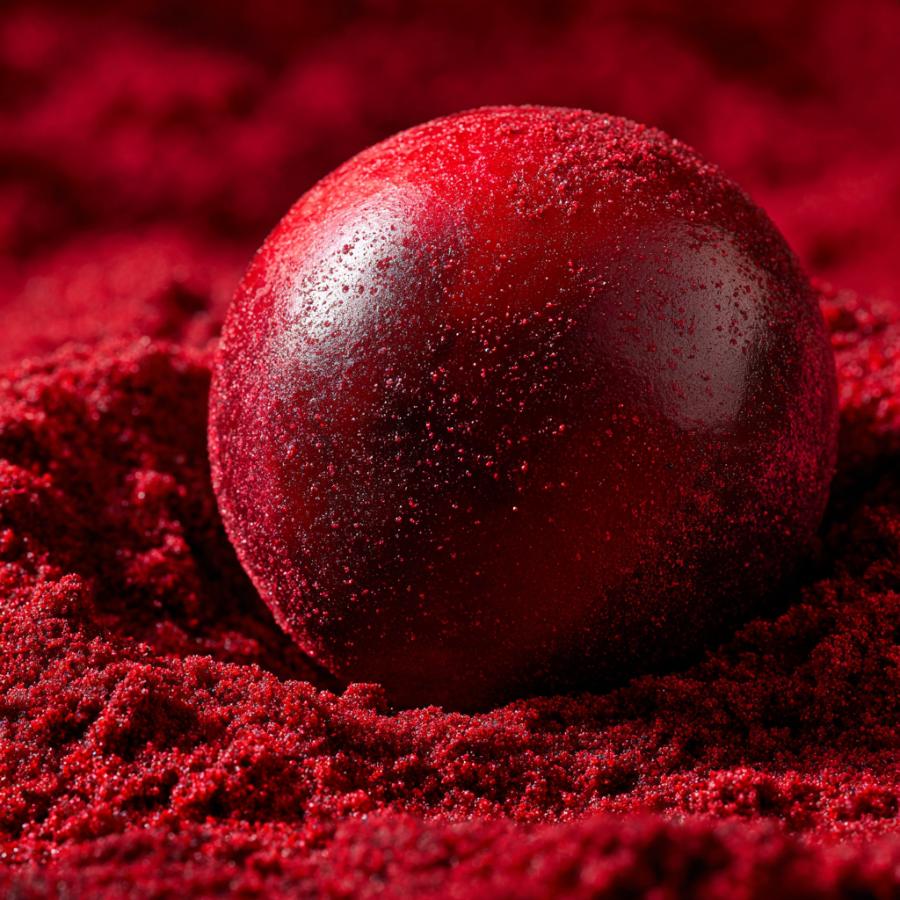
The deep crimson red of the Cranberry
We don’t just like red, we’re hardwired to worship it. Red is rare in nature, so it’s a high value AND high risk color.
Nature has selected the cranberry to be of high value for us humans.
The deep crimson red of the cranberry is significant because for millions of years, noticing red meant surviving (danger), mating, or feasting.
🧬Evolutionarily, seeing red in food found in nature signaled, “Eat me, I am sweet and therefore have lots of energy and nutrition for you!” Out in the environment, it signaled danger; blood, fire and poisonous animals, all things we needed to be hyper focused on. Our primate ancestors who noticed red more acutely survived and thrived more often than those who didn’t.
👁️ Visually, red hooks onto your retina like no other color. It hits your eyes first, before other colors, and then goes to your brain, which processes it faster than other colors as well. Both get your heart rate going a little faster and spike your adrenaline so you pay attention.
❤️ Attraction/Danger again. Red (blushing) in women is a sign of arousal & desire. Red faces also mean out-of-control anger, and for us to pay attention and beware. Seeing a red face in someone activates our brains in a very powerful way, to this day even.
Cranberries are red on purpose. Their anthocyanins (the pigments) intensify in the cold which means the berry blushes just before harvest, letting us know it’s ready and packed with micro nutrients we need for optimal vitality. There are other fruit that are naturally red in nature, but none save cherries, have that deep, scarlet color our brains are highly attracted to.
The Badlands & 1 of 3
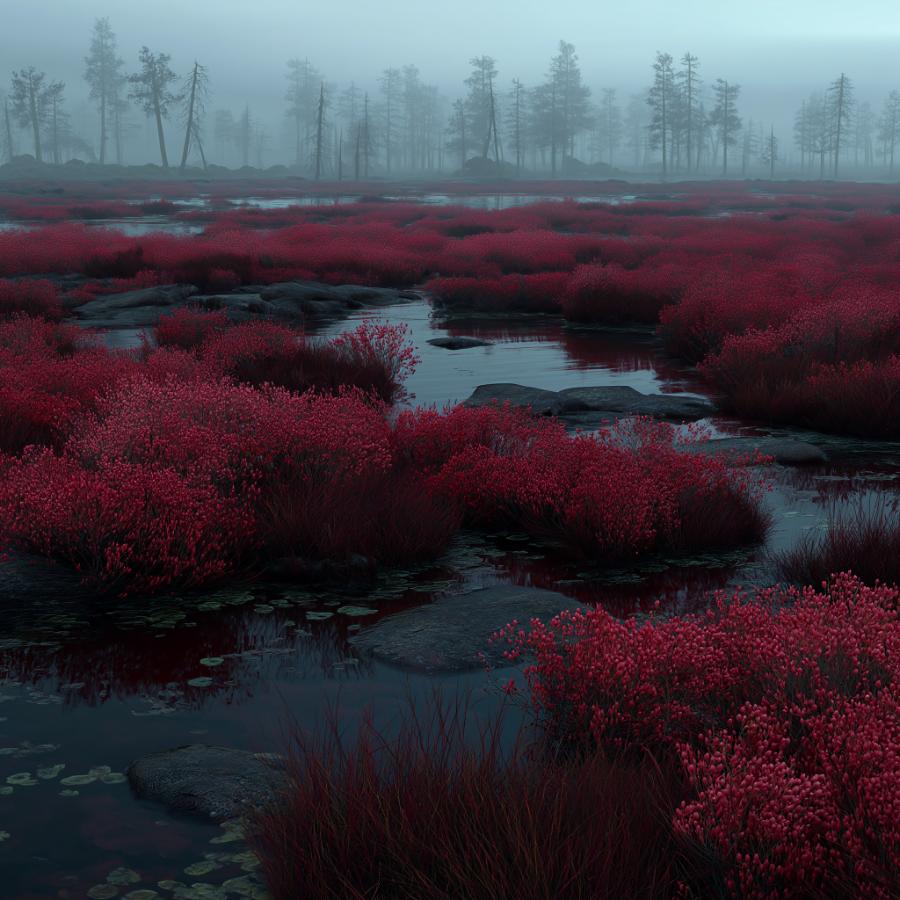
Ancient Cranberry Bog
Bogs are harsh places. 10,000 years ago in North America it was cold, and there were ice sheets that were just starting to melt which created wetlands and bogs. The soils were acidic, cold, nutrient-poor, and water-saturated, which is a harsh environment for many plants except for cranberries, which found a way to adapt and even thrive in it. They grew where most plants couldn’t, and on top of that produced a powerhouse crop – the crimson berry.
They came from the badlands, and were forged into a highly sought after gem by the populations that lived in that region for thousands of years afterward.
They also boast being 1 of only 3 fruit that are native to the region, the others being blueberries & concord grapes. Cranberries staked their claim in the wild, untamed heritage of North America, no other food has been able to out do them.
Survival
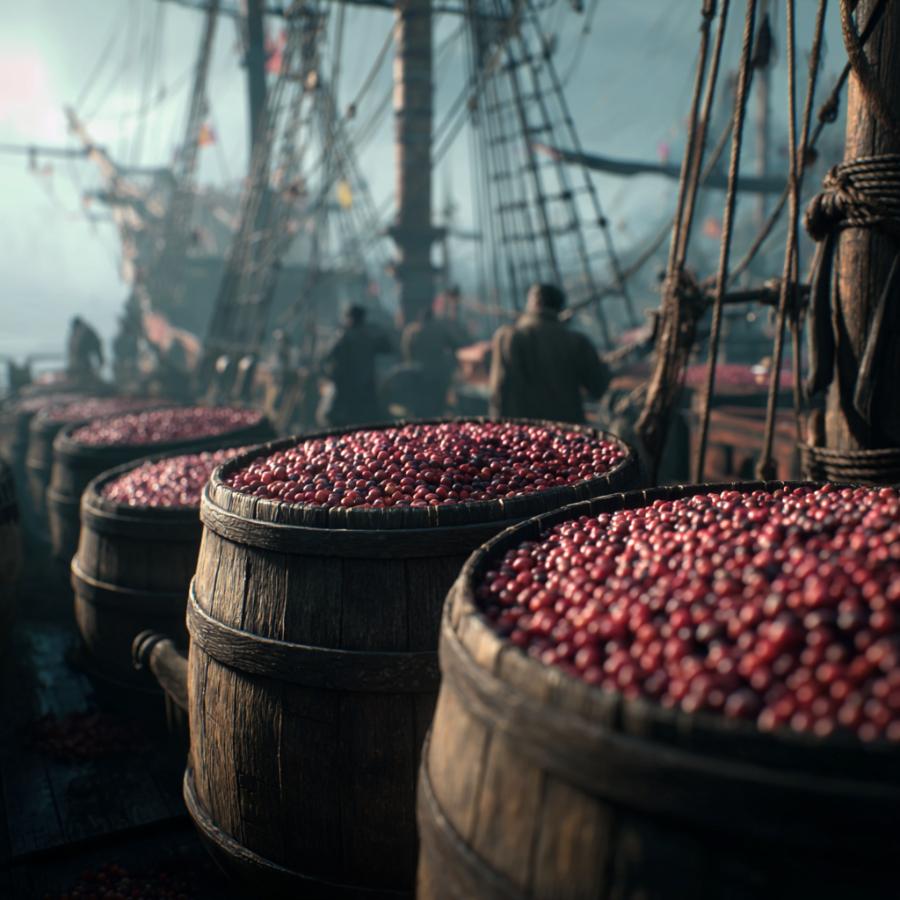
Explorers & Whalers would take Cranberries on board to prevent Illness
Between the 15th and 18th centuries, scurvy was responsible for more deaths among sailors than storms, fights, and all other diseases put together. The total number of deaths is estimated to have reached 2 million. People affected by scurvy would have bleeding gums, lose their teeth, have old wounds that reopen, suffer from extreme fatigue, and finally die. It was common for a ship to lose half or even three quarters of its crew on lengthy trips.
But cranberries would come to the rescue. They were a good source of vitamin c, but more importantly they preserved very well. Cranberries have benzoic acid which is a natural preservative. It is the rarest of all preservatives and it is the one that is responsible for preventing bacteria and molds on stored cranberries. Because of this, cranberries could be stored fresh for 3 to 6 months in a cold cellar, while most fruit would have spoiled within days or weeks.
Before refrigeration was invented, this was of huge importance, literally a matter of life and death. Households could pick fresh cranberries in October and get to eat them in March.
Both the sailors and settlers would cram the cranberries in barrels made of wood and then cover the top with cold water. The water sealed the barrel, the cold temperature had the effect of refrigeration, and the natural acids in the cranberries prevented contamination. Sometimes cranberries were still firm and safe to eat in barrels that were opened after an 8 to 10 months sea voyage.
An extremely rough estimate is that cranberries are responsible for saving 250,000 lives in that era, which is a lot for the time. Add in their descendants and the number today would be close to a billion people alive because of the lifesaving power of the cranberry.
Dried Cranberries – Once dried, cranberries could last a very long time as long as they are kept dry. Evidence from archaeology tells the story that Native Americans stored dried cranberries as a multi-year food supply during times of famine. The nutrients and calories that were concentrated in dried cranberries made it an excellent source of nutrition albeit in small quantities.
*** During the Great Depression, wild cranberries from the forests offered free food to starving families. The chance to pick berries from public or deserted lands was what separated those who went hungry from those who had enough to eat for thousands of families. It was a free source of hydration, vitamins and minerals, and energy.
Thanksgiving Icon

The 1st Thanksgiving
It is an incredible story on many fronts:
The Mayflower arriving when it did could not have been a worse time for the Pilgrims in Plymouth Rock in December 1620. The cold snap was about to hit, they had no shelter, their were low on food, and they were clueless about how to survive in their new land. Half of the people of the total 102 passengers, died during the first winter.
In March 1621, the survivors met with Squanto (Tisquantum), a Patuxet Indian who knew English and was a survivor himself; his entire tribe was decimated by a plague while he was taken as a slave in Europe, and when he came back home he found it abandoned. He could have easily chosen to be bitter, but instead, he helped out and gave the pilgrims the means to survive.
He helped, along with many other Native Americans, teach them how to find and use cranberries. The Native Americans called the berries “sassamanesh” as they had been picking them from the bogs for more than a thousand years. They taught them; where to look for cranberries, when to pick them, how to store and dry them, how to use them for wound healing and more.
So in autumn 1621, after their first successful harvest, the Pilgrims and Wampanoag peoples held a three-day celebration. While we call it “the first Thanksgiving,” and although nobody can be sure cranberries were a part of it, historians think it is highly likely given the time of year (peak harvest in October), the fact that the Wampanoag regularly served cranberries at meals, and that many old documents mention cranberries at autumn feasts at the time.
Fast forward to American independence and there was a focused effort to develop distinctly American cultural traditions separate from British ones. Cranberries, as one of only three fruit native to North America as was discussed above, became an important symbol. Serving cranberries at autumn tables was literally patriotic. It meant something to the American psyche to psychologically separate from their overseas (metaphorical) parents, the English.
Ancient Animals

Ancient animals and us connect through time via cranberries
10,000 years ago there were ancient animals, now extinct, who ate cranberries as part of their diet, just like we do today. Some of them are well known like wolly mammoths and mastedons, but others you may never have even known existed on the continent of North America. Animals like giant ground sloths, particularly species in the genus Megalonyx, the short faced bear and ice aged birds all ate crans as part of their diet.
A more detailed look at which animals then and now ate cranberries can be found on this page.
Imagine this: ten thousand years ago, a giant ground sloth the size of a pickup truck wades into a squishy cranberry bog, its claws scooping up the same red berries we throw into muffins today. Same with the shaggy mastodon, trunk curling around juicy clusters on the bush, while its legs sink into the peat. These long gone beasts actually munched the exact fruit that we eat today, that ends up in our holiday sauce, and that’s mind blowing because it’s like nature handed us a secret handshake across time. Did you know that those cranberry bogs were like quicksand and sometimes trapped them, burying them, with their bones still bubbling in the same acidic water, becoming part of the same tough little berries that survived ice ages and extinctions. When we bite into a cranberry, we’re tasting a flavor that once fed creatures taller than houses, linking our breakfast tables to an ancient world through one tiny, stubborn, incredible, sour, tasty, and mysterious fruit.
Seeds & Powder
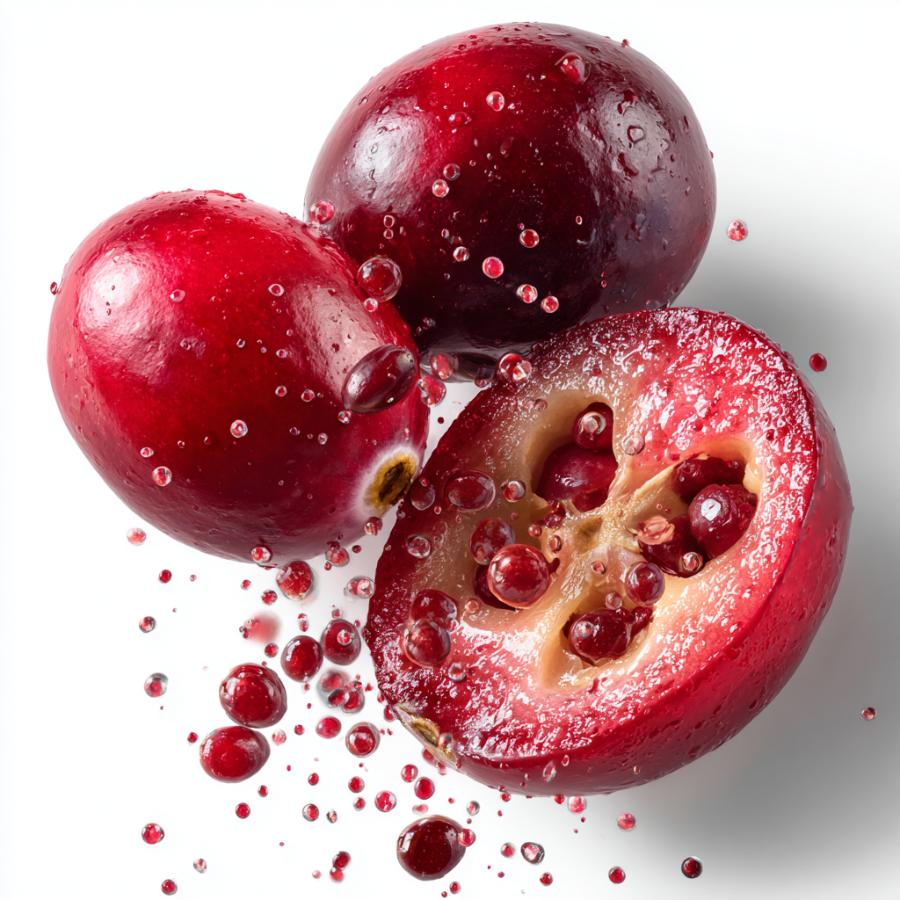
Seeds of the Cran
The seeds and powder that this miracle berry produce are such small red wonders that no other fruit can compete with them. While the beloved and ever popular chia or flax seeds may be rich in omega 3s, cranberry seeds provide an ideal 1:1 balance of omega 3 and omega 6, a ratio that is so rare in nature that nutritionists refer to it as “the gold standard for inflammation control.”
When these seeds are cold pressed into oil, they become very rich in gamma-linolenic acid (GLA) which is the same skin beneficial compound found in costly evening primrose capsules. You know, the stuff that are sold in malls, online mega stores and what’s marketed to women on a global scale? Yeah, that billion dollar industry bows before the mighty cranberry seed empire. Well, an empire in the making anyway.
The powder? It is the whole fruit; skin, flesh, and seed, micronized (such a cool word) into a red powder that has proanthocyanidins (PACs) of Type A, which are molecules that have “hook and release” claws that attach to the bacteria E. coli and thereby release them from the body as a doorman would from his night club. No other berry powder (not acai, nor goji, nor even pomegranate) can boast this disinfecting superpower that is confirmed by science, and maybe even Bill Nye the Science Guy? We’re working on that one.
The seed works on the inner parts of your body, from the outside, and the powder protects your insides, once consumed. Try this; take a spoon of cranberry powder in your favorite drink, and once inside you, your physiology will notice that its ellagic acid silently keeps an eye on your cells by cutting off the precancerous DNA strands before they mutate.
Now, try taking cranberry seed oil to a scar and see how ceramides, the skin components which act like glue, rebuild your skin layer in 3 days exactly. Most fruit seeds are bitter and so you spit them out; however, cranberry seeds are so minute and nutrient rich that native healers actually made pemmican out of them for their long trips in the winter, a superfood trick that was ahead of kale smoothies by 400 years. In comparison to watermelon seeds (which are mostly fiber) or grape seeds (that are high in tannins and may cause stomach upsets) cranberry seeds are safe enough for toddlers and at the same time, powerful enough to bring down LDL cholesterol by 10 % in two months according to some sources.
They seem almost holy as they are the only food in the world that combines war medicine with beauty ritual into one scarlet bead. The seed was called “the heart that keeps beating after the berry is gone” by Native Wampanoag elders, and they used to grind it into war paint that also acted as wound balm.
As a matter of fact, astronauts onboard the International Space Station are using cranberry powder to avoid UTIs in zero gravity, one of the many proofs that this fruit’s medicine is out of this world (sorry for the joke, but I had to).
Try This – Place one seed on your tongue and notice … it is not a seed … it is a small red planet, with the same strong will to protect life that at first did it for the pilgrims, sailors, and now you, making each crimson sprinkle on your oatmeal a sort of communion with something ancient, fierce, and so very much alive.
Rituals, Festivals & Worship
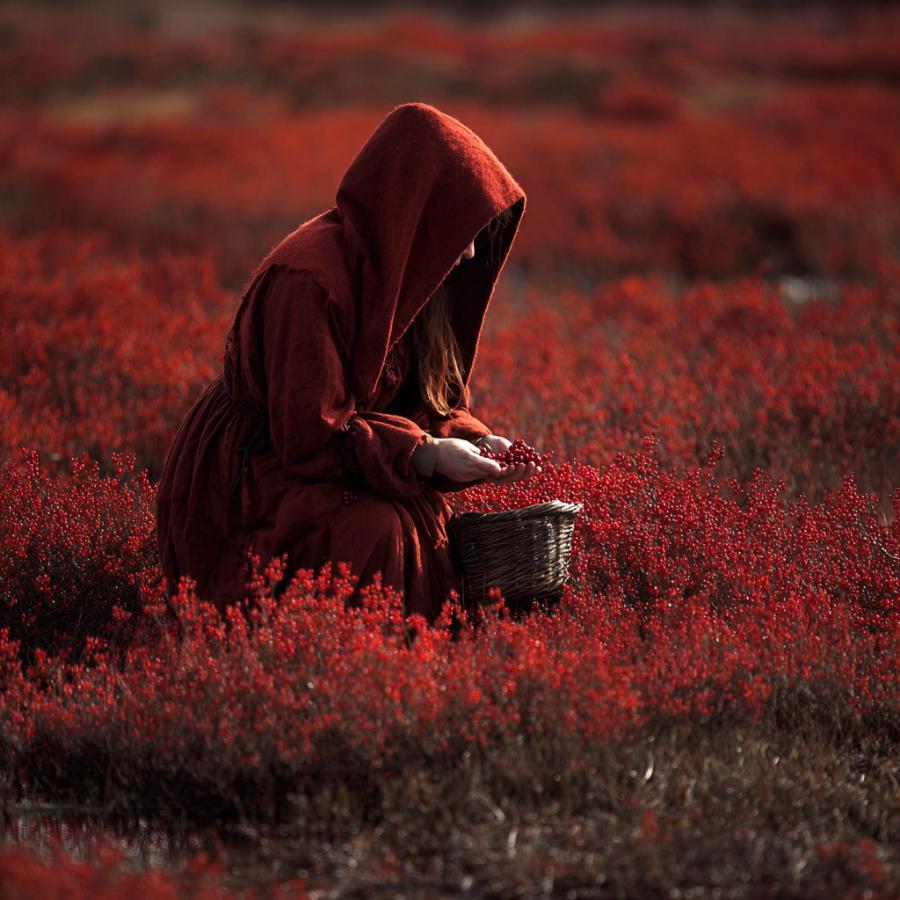
The Scarlet Vigil of the Pilgrim Mothers (Plymouth, 1621–1649)
Cranberries were more than food. They meant something to people, and when I say people I mean everyone, all cultures, from Native Americans to European settlers and everyone in between.
And when I say they meant something, I mean it in a deeply emotional, spiritual, almost haunting way. Take this festival below:
The Scarlet Vigil of the Pilgrim Mothers (Plymouth, 1621–1649)
Every November 13th, the night the first frost painted the bogs crimson, the women of Plymouth Colony slipped away from the stockade. Barefoot, cloaked in red wool, they carried seven cranberries in their left hand, one for each ship that had crossed the Atlantic. At the edge of Town Brook bog they knelt, pressed the berries into the peat, and whispered the names of children lost at sea. The frozen berries cracked open like tiny hearts; the mothers believed the cracks carried prayers straight to heaven. Night found them asleep in the vines, faces covered with ruby frost so strange that Reverend John Lyford said: “They lay as if baptized in the blood of the land itself.”
I mean come on. Who can read that and not feel something ancient and much bigger than themselves? A connection to our past, through cranberries, via weeping mothers for those who braved the Atlantic, which must have seemed like wandering off into the great, grey unknown, and were never seen again. It’s a connection to our collective unconscious, as we can all relate with that image, with that ritual, with what these Pilgrim mothers were feeling.
Now here’s another that never fails to give goosebumps to anyone reading about it for the first time.
Mi’kmaq Spirit Float (Pre-Colonial Era, Maritime Provinces, Canada)
In the mist-veiled coves of Mi’kmaq territory, the Glooscap’s Tide Dance unfolded during autumn equinoxes, honoring the trickster-creator Glooscap who, legend whispers, first gifted cranberries from the sea’s depths. Canoes filled with floating berries were sent out into tidal pools at midnight, their majestic forms drifting like soul lanterns to appease water spirits and ensure bountiful returns. Drummers pounded rhythmic verses with bone flutes carved from vine roots, creating a hypnotic type of atmosphere that had bioluminescent plankton igniting the water in ruby fire as they called it, a mesmerizing scene that left witnesses breathless, forever marked in their psyches, to the berry’s tidal mysteries.
Must have been incredible to watch. Floating canoes filled with red cranberries, glowing plankton, rhythmic drumming, appeasing the Creator. Once again we see cranberries in the middle between man and creation, and spirit, helping us bridge the gap and solidify our souls as we become connected to this world and the world beyond, held in the hand of spirit, of that which we can’t see, but can feel …
… all with the help, of these simple little red berries.
The Cranberry Awe Summary
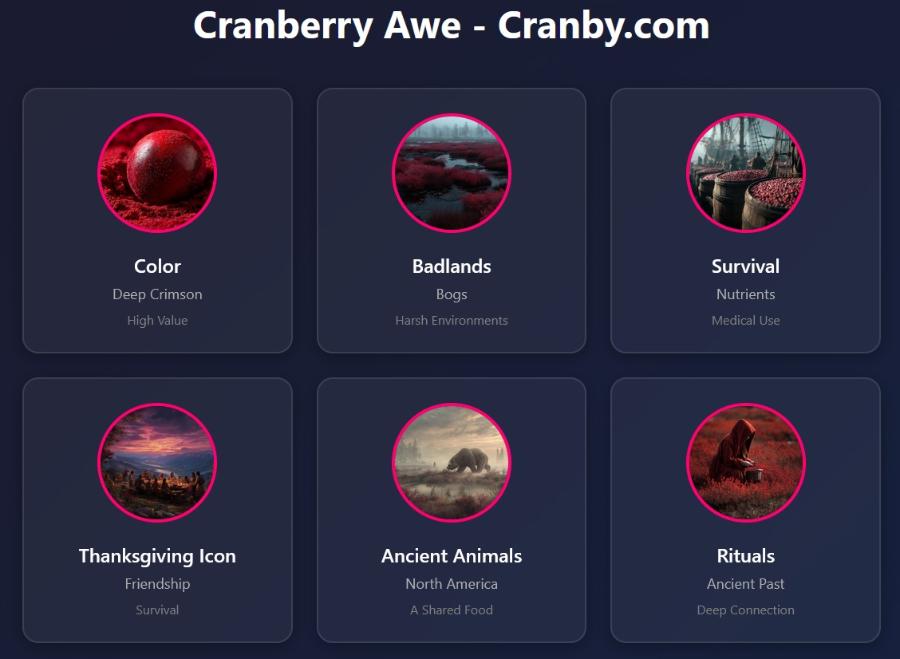
Cranberry Awe – Infographic
By now I hope you are floored. I hope that after reading this article you will see cranberries in a whole new way. Not just one food of many we occasionally enjoy, but a substance that is a gateway to deeper dimensions of our own personal reality.
Something that connects us to our past, that connects us to other people, all people, and that connects us to the divine as well, as it did for our ancestors for thousands of years.
I hope it makes you want to include cranberries more often in your life, and not just during the holidays.
There are hundreds of ways to enjoy them too. Hundreds of recipes can be found on this site. You can drink the juice pure, or buy the sweetened variety. You can use the powder, or make a thick, mouth watering topping.
And if you prefer to enjoy them in a non-food way, I’d highly recommend you take a tour of a cranberry bog. Many farms offer them. It’s an experience you’ll never forget.
Cranberries are awesome.
– Cranby

